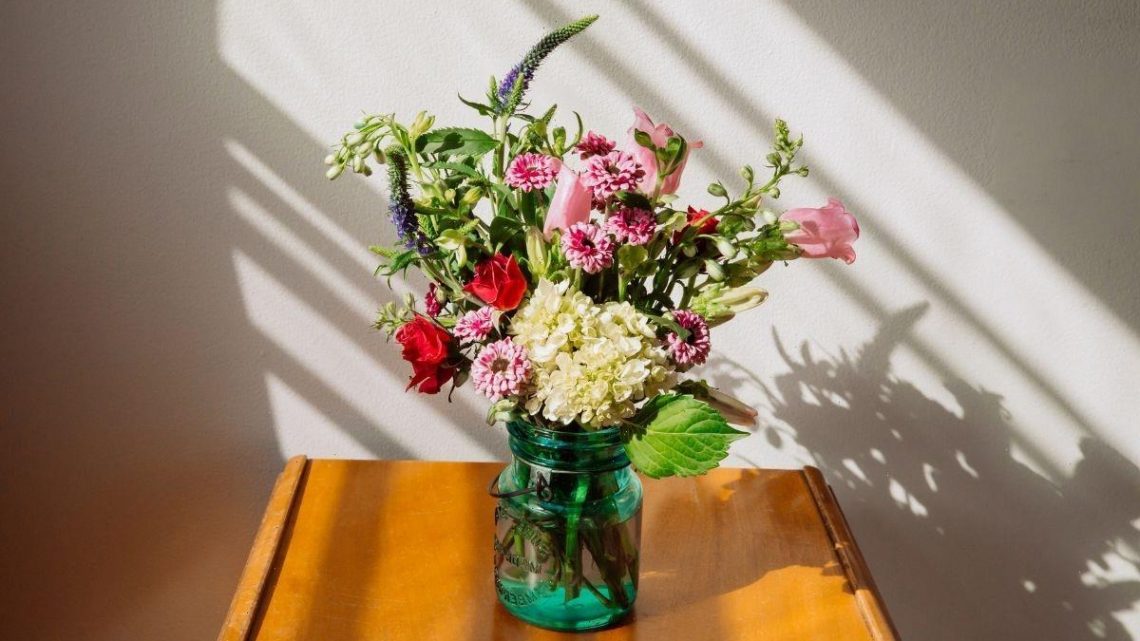
‘Basic tips’ to keep cut flowers ‘fresher for longer’
02/11/2023Interflora provides advice on making flowers last longer
We use your sign-up to provide content in ways you’ve consented to and to improve our understanding of you. This may include adverts from us and 3rd parties based on our understanding. You can unsubscribe at any time. More info
Fresh flowers typically last up to seven days, depending on the individual variety. However, if properly cared for, they could last even longer, meaning you could enjoy them for up to two weeks. While many opt to place them wherever they feel is suitable, there are certain places in the home where Britons should avoid placing a vase of flowers.
Jade Robertson of top flower delivery service, Prestige Flowers, said: “To make flowers last their full lifespan, they need good care, but it doesn’t take a lot of time.
“By following some basic tips, it’s easy to keep your foliage looking great. Cut flowers generally like to be kept at room temperature, which is between 18C and 22C.
“They don’t like heating elements, which is important to remember at this time of year when people have their radiators and portable heaters on, or fireplaces.”
Britons should also keep their vases away from sunny windowsills or next to any appliance which gives off heat, such as the kettle, toaster or even TV.

The expert said these are the “worst places” where you could keep your bouquets, as they are likely to dry out and die a lot faster.
Jade added: “By keeping flowers at a stable temperature, not too hot or too cold, they will grow and blossom at their natural rate, thus extending their lifespan.”
Before searching for a suitable location for them, preparing the flowers by cutting the stem helps to give them the best chance at survival.
Make sure to cut each individual stem at an angle, around an inch and a half above the base. This helps to cut off any diseased stem as well as increase the amount of water absorbed by the flowers.
DON’T MISS:
Method to ‘instantly’ kill driveway and patio weeds for good [COMMENT]
Seven ‘surprising’ items you can put in your dishwasher [INSIGHT]
‘Most effective’ method to remove limescale from kettles [EXPLAINER]
It is also recommended to add the flower food provided in the flower wrapper to help keep them “fresher for longer”, making sure to follow the instructions on the packet.
Jade continued: “If your water does start to look cloudy, change the water and add more flower food, otherwise it’s unlikely your flowers will be getting the nutrients they need to keep them looking their best for as long as possible.
“Ripening fruits, and especially bananas, release small amounts of ethylene gas which can speed up the maturation process, and therefore making your flowers wilt much earlier.
“It’s much better to move them away from the fruit bowl and enjoy the blooms for that bit longer.”

Supermarket Morrisons recommended placing a copper penny in the flower vase to help prevent the growth of bacteria.
Britons could also add a few drops of Vodka, or any clear spirit, to their bouquet. According to the supermarket, this inhibits ethylene which prevents the flowers from wilting quickly.
The experts at GardenBuildingsDirect.co.uk explained: “Unknown to many, they contain natural antimicrobial properties, which prevent bacteria’s growth, which causes blossoms like tulips to dry up and wilt.”
The trick doesn’t only work on tulips, it can also help flowers such as roses too, which are popular Valentine’s flowers.

To use this hack, make sure to clean the coin before placing it into the water to get rid of any germs. If you don’t have a coin to hand, sugar and apple cider vinegar can also be used.
The pros added: “This cupboard staple [sugar] can be used as a preservative to keep flowers looking healthy for longer.
“Three tablespoons of sugar should be dissolved into one litre of warm water.
“When filling the vase, the freshly cut stems should be covered by seven to 10 centimetres of prepared water.”
Source: Read Full Article

